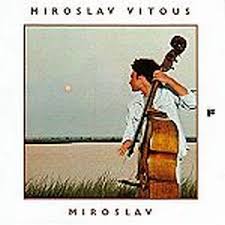
Daily Dose Of Jazz…
Miroslav Ladislav Vitouš was born on December 6, 1947 in Prague, Czechoslovakia. He began the violin at age six, switching to piano after about three years, and then to bass at age fourteen. As a young man in Europe, he was a competitive swimmer but one of his early music groups was the Junior Trio with his brother Alan on drums and Jan Hammer on keyboards.
He studied music at the Prague Conservatory and won a music contest in Vienna, Austria in 1966 that gave him a scholarship to the Berklee College of Music in Boston, Massachusetts which he attended one year before going to Chicago, Illinois to play with trombonist Bob Brookmeyer and flugelhorn pioneer Clark Terry.
When Miles Davis saw him playing in Chicago with Brookmeyerin 1967 and invited him to join his group playing at the Village Gate in New York City. It was with Davis that Vitouš first encountered saxophonist Wayne Shorter, keyboardist Herbie Hancock and the Davis-centric scene that was transforming mainstream jazz from late hard bop into what would be known as jazz fusion.
1968 saw the first of Vitouš’s partnerships with Roy Ayers, and Herbie Mann, Bennie Maupin, and Stanley Cowell. The following year, Vitouš recorded his debut album as a bandleader, Infinite Search for Mann’s Embryo label. He recorded with Larry Coryell’s Spaces with John McLaughlin, Corea, and drummer Billy Cobham.
In 1969 he recorded with Shorter, McLaughlin, Jack DeJohnette, Corea, and Brazilian percussionist Airto Moreira. The following year he continued as bandleader as he recorded Purple for Columbia, supported by McLaughlin, Cobham and the keyboardist Joe Zawinul. Then Shorter, Zawinul, and Vitouš formed the founding core of the jazz group Weather Report. Creative differences between him and Zawinul facilitated his departure from the group. Leaving the group he moved on to an illustrious career leading his own band and winning respect as a composer.
Double bassist, bass guitarist and composer Miroslav Vitouš continues his performing, recording and composing to this day.
More Posts: bandleader,bass guitar,composer,double bass,history,instrumental,jazz,music
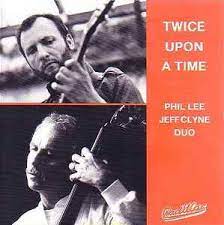
Daily Dose Of Jazz…
Jeffrey Ovid Clyne was born on January 29, 1937 in London, England and taught himself double bass from the age of 17. He played in the 3rd Hussars military band during his national service from 1955 to 1957, and on demobilisation found himself at the cutting edge of the British modern-jazz and bebop movement.
Clyne worked with Tubby Hayes and Ronnie Scott in their group the Jazz Couriers for a year from 1958, and was part of the group of musicians who opened Ronnie Scott’s Jazz Club in November 1959. He was a regular member of Hayes’ groups from 1961. He accompanied Blossom Dearie, Stan Tracey on his Jazz Suite Inspired by Dylan Thomas’ Under Milk Wood album, Ian Carr, and Gordon Beck on Experiments With Pops, with John McLaughlin.
Jeff would go on to perform with Dudley Moore, Zoot Sims, Norma Winstone, John Burch and Marion Montgomery. He was a member of Nucleus, Isotope, Gilgamesh, Giles Farnaby’s Dream Band and Turning Point during the 1970s. He often worked with drummer Trevor Tomkins.
Bass guitar and double bassist Jeff Clyne died on November 16, 2009 from a heart attack at the age of 72.
More Posts: bandleader,bass,bass guitar,history,instrumental,jazz,music
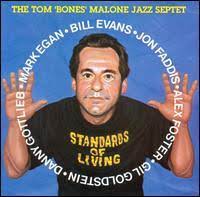
Daily Dose Of Jazz…
Thomas “Bones” Malone was born June 16, 1947 in Honolulu, Hawaii. He began playing professionally as lead trumpeter for Brenda Lee at a club in Jackson, Mississippi while enrolled at the University of Southern Mississippi. In response to a call from Warren Covington, leader of the Tommy Dorsey Orchestra, he began contracting musicians. After transferring to North Texas State University, Malone continued working as both a player and a contractor for groups. He graduated from North Texas State University with Lou Marini, and both were members of the One O’Clock Lab Band at North Texas.
After graduation, he worked in bands of Woody Herman in 1969, and during the early Seventies he worked with Duke Pearson, Louie Bellson, Doc Severinsen, Frank Zappa, and Blood, Sweat & Tears. In 1973, Malone began a close, fifteen-year association with Gil Evans, whom he has called a mentor. He recorded albums with Evans and toured Europe, Japan, and the Far East. In 1975 Malone toured with Billy Cobham and in 1976 with The Band.
From 1975 to 1985 he worked as arranger for Saturday Night Live and from 1981 to 1985 as musical director. He wrote the chart for the skit that introduced John Belushi and Dan Aykroyd as the Blues Brothers and worked on the film score for Blues Brothers 2000. He joined the CBS Orchestra in 1993, and contributed more than 1,600 arrangements to the Late Show with David Letterman.
As a studio musician, he has been heard on more than 1,000 records, more than 3000 radio and television commercials, and over 4,000 live television shows. In 2007 Bones was invited by music director Geoffrey Moull to arrange and perform a concert with the Thunder Bay Symphony Orchestra. In 2011 Malone was a guest artist with the University of Southern Mississippi Symphony Orchestra.
Trombonist, arranger, and producer Tom Malone, who also plays saxophone, trumpet, tuba, flute, and bass guitar, continues to expand his creative reach.
More Posts: bass guitar,flute,history,instrumental,jazz,music,saxophone,trombone,trumpet,tuba
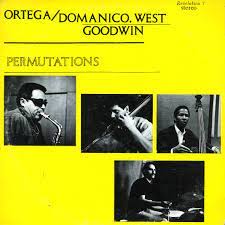
Daily Dose Of Jazz…
Charles Louis Domanico, better known professionally as Chuck Domanico, was born on January 20, 1944 in Chicago, Illinois. Settling in Los Angeles, California in the mid-1960s, for nearly forty years, he was a central jazz figure in Hollywood who contributed to many movies and TV programs.
Domanico worked with Frank Sinatra, Barbra Streisand, Carmen McRae, Joni Mitchell, Taj Mahal, Diane Schuur, Natalie Cole, and The Manhattan Transfer. He participated in instrumental jazz performances by Chet Baker, Henry Mancini, Shelly Manne, Oliver Nelson, John Klemmer, Roger Kellaway, Barney Kessel, and Art Pepper.
His bass can be heard in themes for television shows like M*A*S*H, Cheers and Frasier, and he contributed to the soundtracks of more than two thousand films.
Double bassist and bass guitarist Chuck Domanico, who played on the West Coast jazz scene, transitioned from lung cancer on October 17, 2002 at the age of 58.
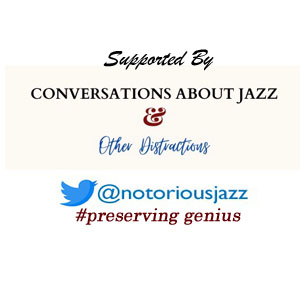
More Posts: bass,bass guitar,history,instrumental,jazz,music
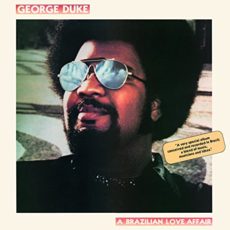
Daily Dose Of Jazz…
George Duke was born on January 12, 1946 in San Rafael, California and raised in Marin City. It was at the young age of 4 that he first became interested in the piano when his mother took him to see Duke Ellington in concert. He began his formal piano studies at the age of 7, at his local Baptist church. Attending Tamalpais High School in Mill Valley, he went on to earn a bachelor’s degree in trombone and composition with a minor in contrabass from the San Francisco Conservatory in 1967.
Initially he played with friends from garages to local clubs, George quickly eased his way into session work, before getting his master’s degree in composition from San Francisco State University. Although starting out playing classical music, his musician cousin Charles Burrell convinced him to switch to jazz and improvise what he wanted to do.
1967 saw Duke venturing into jazz fusion, playing and recording with violinist Jean-Luc Ponty, as well as performing with the Don Ellis Orchestra, and Cannonball Adderley’s band, and recorded with Frank Zappa and The Mothers of Invention on a number of albums through the 1970s. He also played with Ruth Underwood, Tom Fowler, Bruce Fowler from Zappa’s Overnite Sensation band that he was a part of, along with Johnny “Guitar” Watson and jazz guitarist Lee Ritenour. Lynn Davis and Sheila E recorded with him on his late-1970s solo albums Don’t Let Go and Master of the Game.
During the 1980s he collaborated with bassist Stanley Clarke and produced the Clarke/Duke Project that released three albums, he served as a record producer and composer on two instrumental tracks on the Miles Davis albums Tutu and Amandla, worked with a number of Brazilian musicians, including singer Milton Nascimento, percussionist Airto Moreira and singer Flora Purim, and in the 1992 film Leap of Faith featured gospel songs and choir produced by him and choir master Edwin Hawkins.
Duke was musical director for the Nelson Mandela tribute concert at Wembley Stadium in London, temporarily replaced Marcus Miller as musical director of NBC’s late-night music performance program Sunday Night during its first season, and was a judge for the second annual Independent Music Awards to support independent artists’ careers. He worked with Jill Scott on her third studio album, The Real Thing: Words and Sounds Vol. 3; and put together a trio with David Sanborn and Marcus Miller for a tour across the United States.
His educator side had him teaching a course on Jazz And American Culture at Merritt College in Oakland, California. He was nominated for a Grammy as Best Contemporary Jazz Performance for After Hours in 1999, was inducted into The SoulMusic Hall Of Fame in 2012, and was honored with a tribute album My Old Friend: Celebrating George Duke, produced by long-time friend and collaborator Al Jarreau, that received a NAACP Image Award for Outstanding Jazz Album in 2015.
As leader he recorded some four dozen albums and as sideman he worked with such artists as Third World, The Keynotes, Gene Ammons, Billy Cobham, Eddie Henderson, Alphonse Mouzon, Michael Jackson, Deniece Williams, Miles Davis, Dianne Reeves, John Scofield, Chanté Moore, Joe Sample, Phil Collins, Regina Belle, Teena Marie, Joe Williams, Gerald Wilson and Larisa Dolina among many others.
Keyboard pioneer, vocalist guitarist, trombonist, producer and composer George Duke passed away on August 5, 2013 in Los Angeles, California from chronic lymphocytic leukemia. He was 67. His songs have been sampled by Daft Punk, Kanye West and Ice Cube among numerous others.
![]()
#preserving genius
More Posts: bass guitar,flute,keytar,piano,saxophone,synthesizer,trombone,vocal





